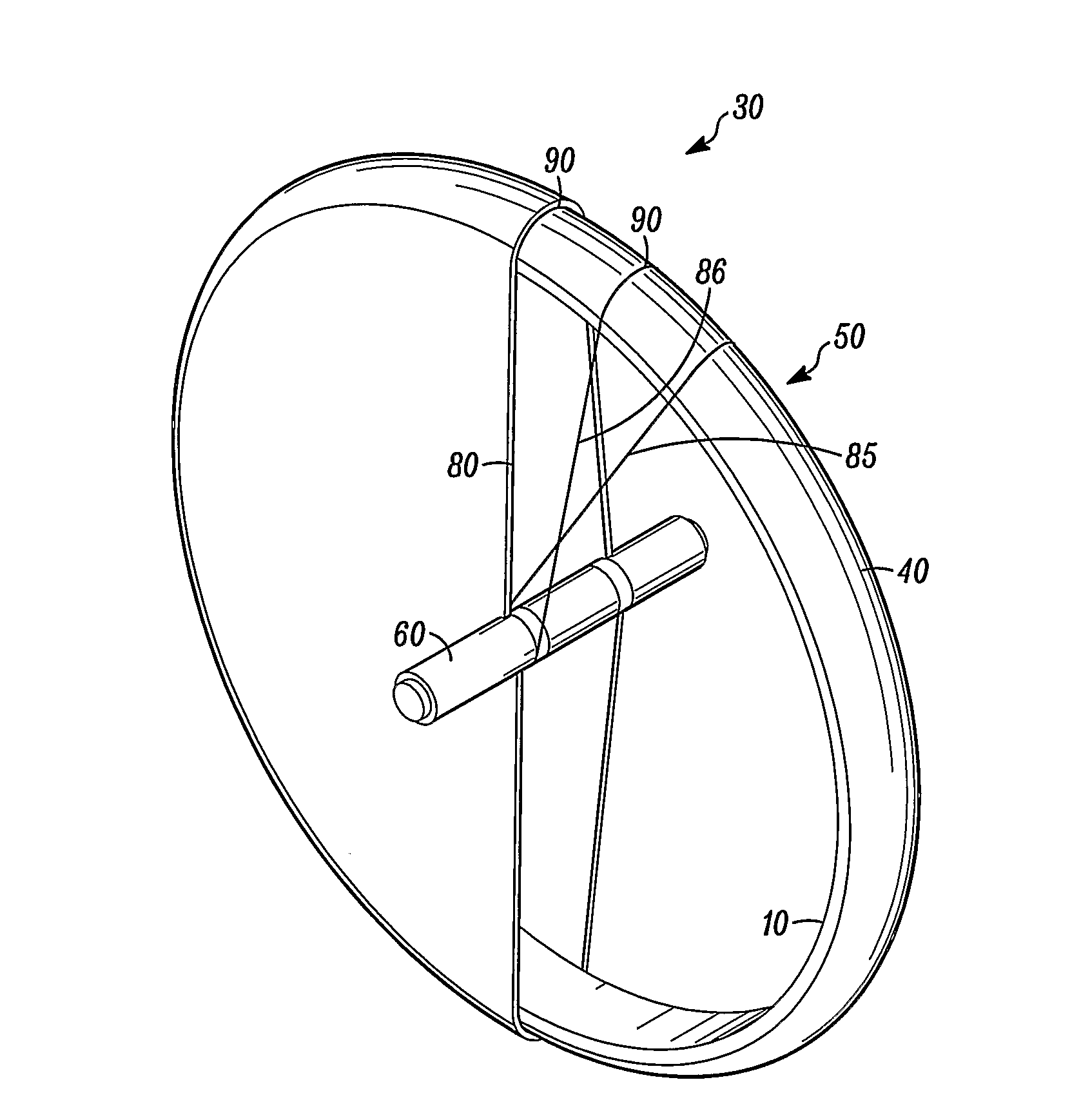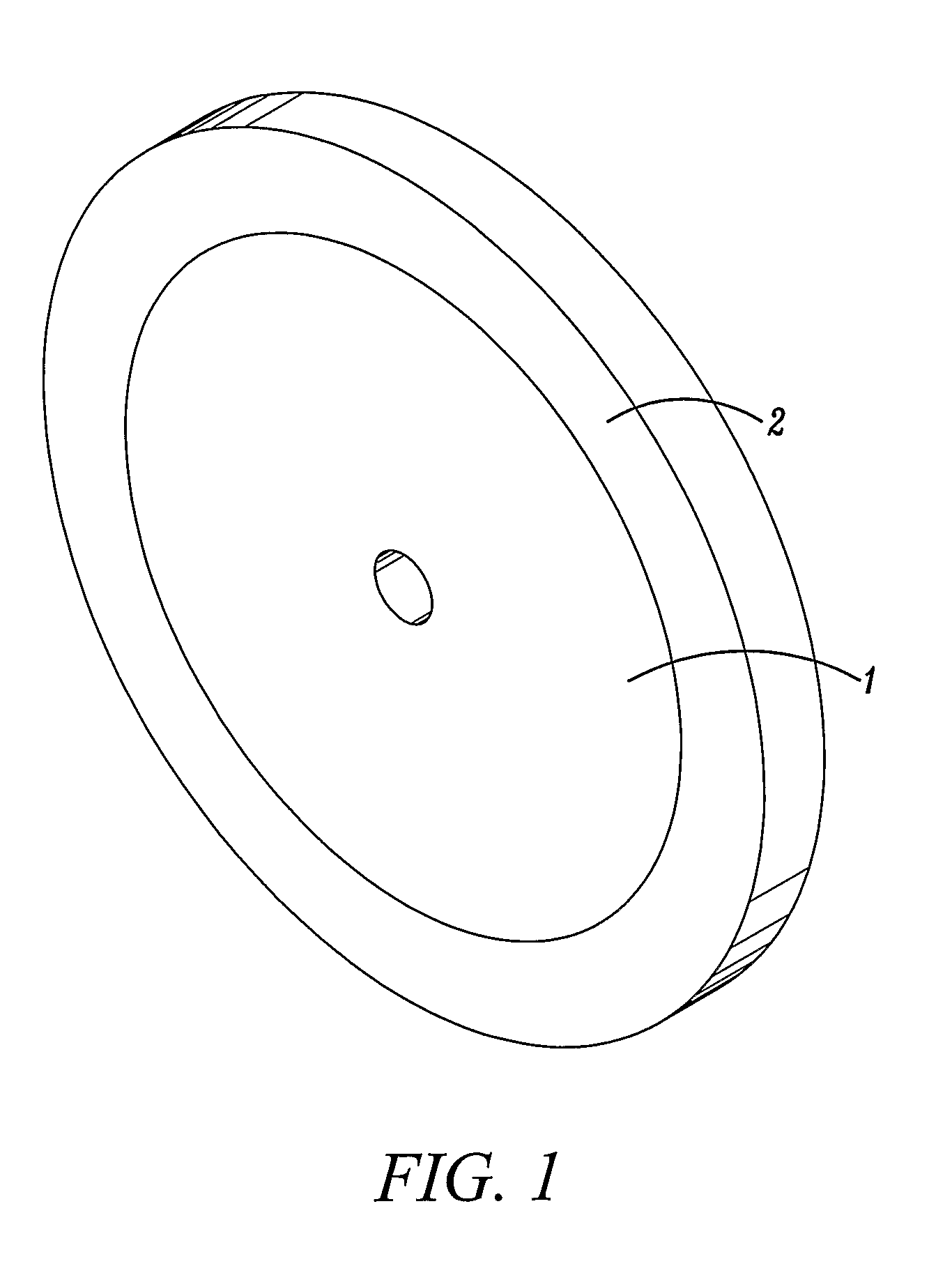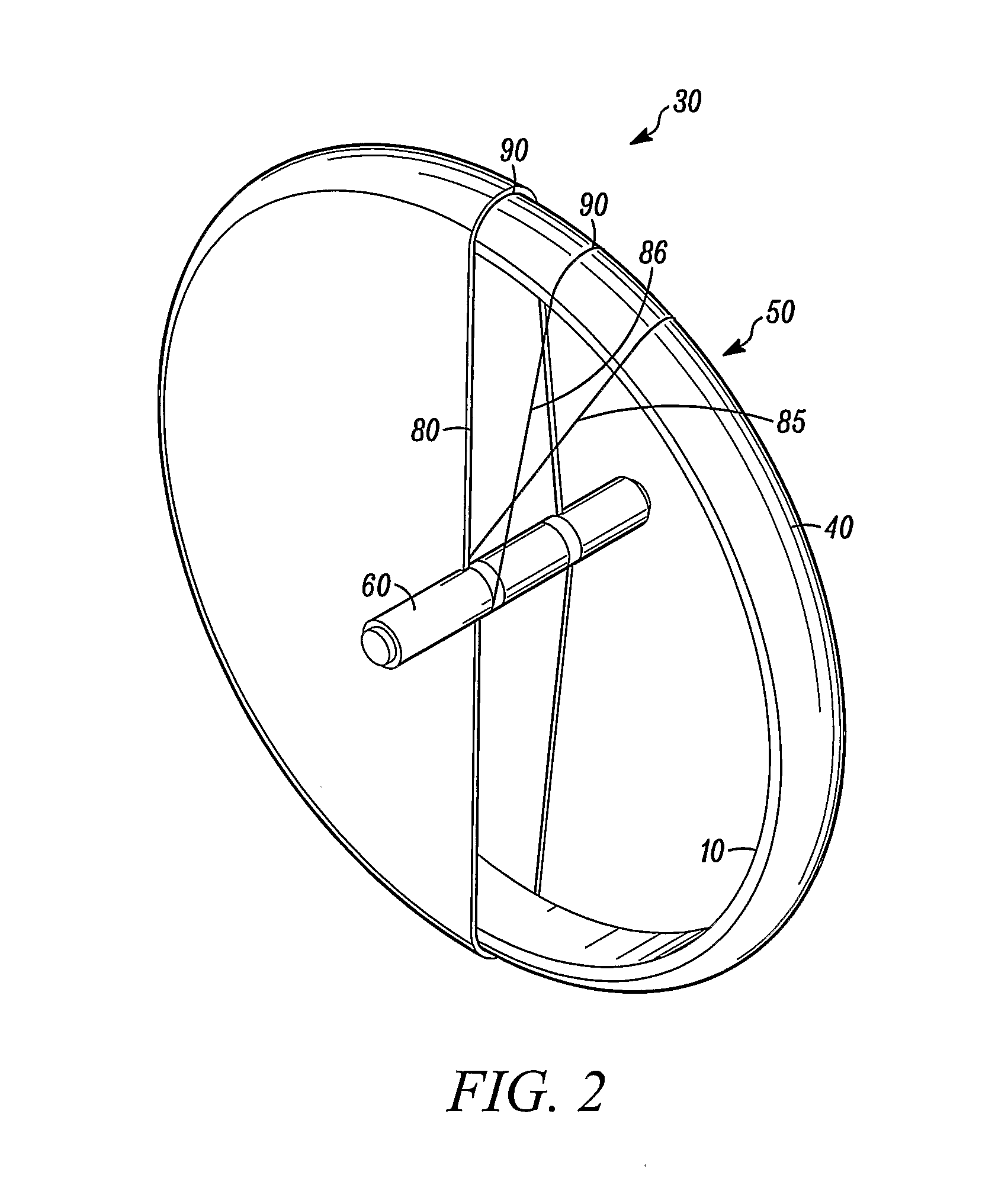Flywheel
a technology of flanges and flanges, which is applied in the field of flanges, can solve the problems of composite ring failure, loose fit of outer ring, dangerous disassembly of central support sections, etc., and achieves the effects of reducing the size of the support element, increasing the safety of the fit, and increasing the achievable rotational speed
- Summary
- Abstract
- Description
- Claims
- Application Information
AI Technical Summary
Benefits of technology
Problems solved by technology
Method used
Image
Examples
Embodiment Construction
[0024]In overview, the apparatus and method described herein relates to a flywheel energy storage device where material used in its construction is deployed in an inertially efficient manner, and where the support structure is under tension, a rim comprising a mass element is held in place on its outer surface by a winding which also passes around a drive transfer element, rather than for example by a compressive interference fit to its inner surface.
[0025]In other aspects a support element can surround the rim to counteract centrifugal forces and a torsionally compliant or resilient drive transfer element such as shaft can be provided.
[0026]The winding may be configured in a number of ways as described below and may also be pre-tensioned. The drive transfer element may be a shaft, which may be hollow and may be constructed from wound carbon fibre. The rim may comprise a circumferential support member and a mass element mounted radially inwards of the support member.
[0027]In embodim...
PUM
| Property | Measurement | Unit |
|---|---|---|
| Mass | aaaaa | aaaaa |
| Speed | aaaaa | aaaaa |
| Circumference | aaaaa | aaaaa |
Abstract
Description
Claims
Application Information
 Login to View More
Login to View More - R&D
- Intellectual Property
- Life Sciences
- Materials
- Tech Scout
- Unparalleled Data Quality
- Higher Quality Content
- 60% Fewer Hallucinations
Browse by: Latest US Patents, China's latest patents, Technical Efficacy Thesaurus, Application Domain, Technology Topic, Popular Technical Reports.
© 2025 PatSnap. All rights reserved.Legal|Privacy policy|Modern Slavery Act Transparency Statement|Sitemap|About US| Contact US: help@patsnap.com



